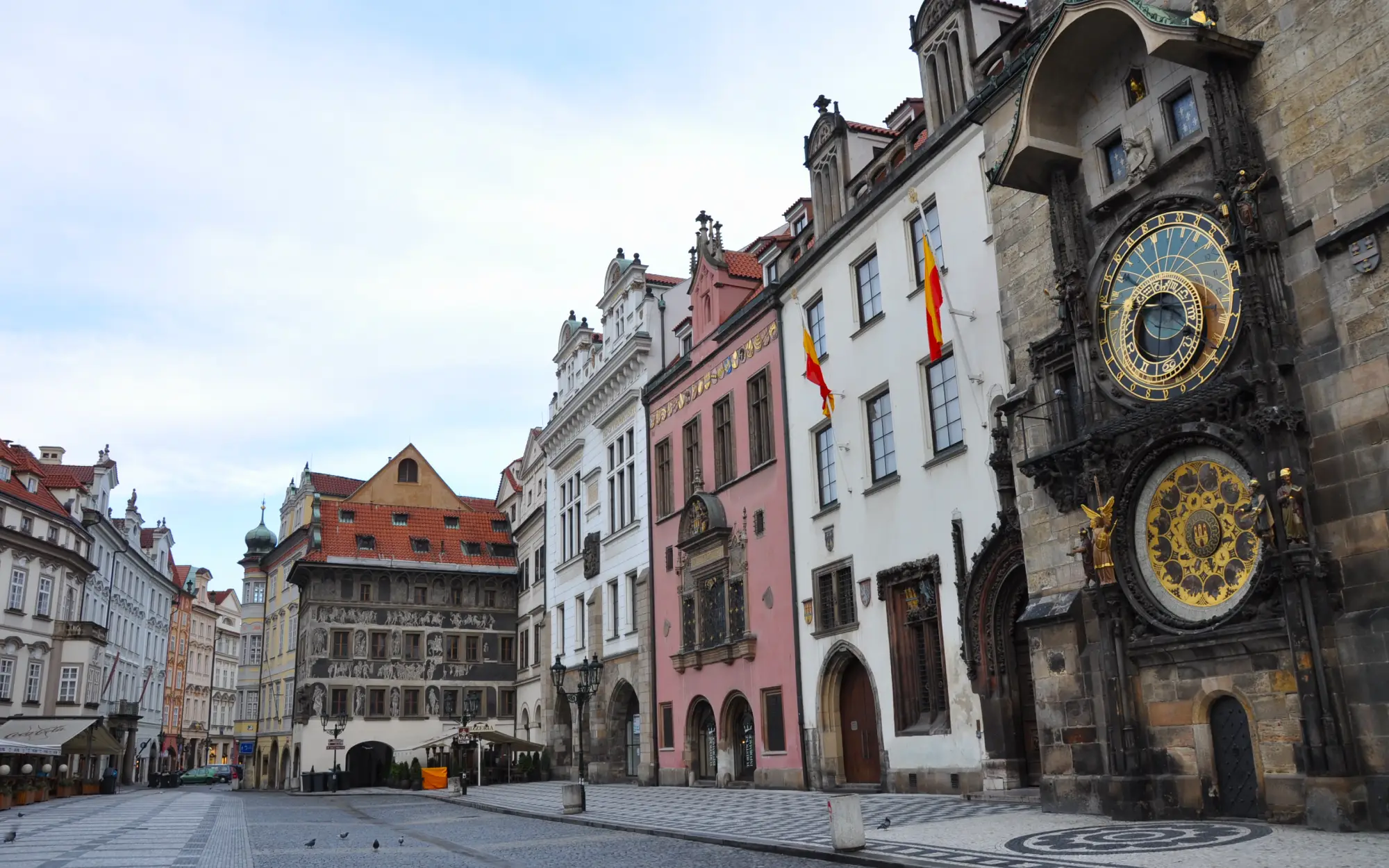
Prague's famous Astronomical Clock, a medieval technological marvel
Also known as Orloj, the Prague Astronomical Clock is one of the most important and visited icons of the city of Prague in the Czech Republic. This medieval tower clock is located on the wall of the Old Town Hall and is one of the most popular tourist attractions in the city.
It was created in the early 15th century by the clockmaker Mikuláš of Kadaň and the professor of mathematics and astronomy at Charles University Jan Šindel, making it one of the oldest astronomical clocks in the world and the oldest clock still in operation. Between the 14th and 15th centuries, in addition to the one in Prague, other astronomical clocks were built in Norwich, St. Albans, Wells, Lund, Strasbourg, Padua and Messina.
Over the centuries, it has been restored and modified several times, and has survived several periods of war and destruction. The clock has been a symbol of the city for centuries and has been considered a technical marvel of its time.
Its three main components are the astronomical quadrant, the circular calendar and the animated figures, which include four allegories and the Twelve Apostles. The decoration of the clock is very detailed and full of religious and astrological symbolism.
The astronomical dial is able to indicate the time in different ways. It shows the time, the position of the sun and the moon in the sky, the time of sunrise and sunset, the hours after sunrise according to Bohemian time, the location of the sun on the ecliptic and the phases of the moon, at the same time. It is shaped like an astrolabe and on it there are representations of the Earth and the sky, the signs of the zodiac, the Moon and the Sun.
An icon of the city of Prague, the Orloj is a true work of art and precise medieval watchmaking engineering that is still in perfect working order today.

The Astronomical Clock, located in Prague's Old Town Square.
It consists of a stationary disk in the center and two rotating rings that function independently: the zodiacal ring and the outer edge where the 24 hours are marked. At the bottom of the central disk is represented the Earth and the sky, around which the mechanism rotates.
The animated figures are perhaps the most impressive part of the clock. Four figures flank the clock, representing Vanity as a man holding a mirror, Greed as a man with a bag of gold, Lust as a Turkish prince with a mandolin, and Death as a skeleton with a bell and an hourglass. In addition, above the clock are placed the twelve apostles behind two small windows.
Every hour on the hour, the skeleton rings the bell and immediately all the other figures shake their heads because they are not yet ready to "accompany" it. Then, coming out of the two small windows above the clock, the figures of the Twelve Apostles follow one after the other in the so-called "Walk of the Apostles". Finally, another figure representing a rooster flaps and crows, and then the chimes ring out the hour. This spectacle attracts large crowds of tourists every day and is one of Prague's most popular attractions.
Finally, the perpetual calendar shows each month and the signs of the zodiac. It was added during the second half of the 19th century and is composed of twelve medallions depicting scenes from each of the months of the year. It also contains the daily saints' calendar and is flanked by four sculptures representing a philosopher, an astronomer, a chronicler and the archangel Michael.
The Prague Astronomical Clock is a masterpiece of medieval art and technology; a testament to the ingenuity and skill of the ancient clockmakers. Despite having survived several periods of war and conflict, the clock still works and remains a popular tourist attraction in Prague. It has been a UNESCO World Heritage Site since 1992 as part of the historic center of the city of Prague.
Welcome to the Czech Republic!
Another interest sights
Czech Republic
Beautiful Karlovy Vary, a medicinal tourist destination of the European aristocracy
Austria
Stephansdom, the huge Vienna's cathedral
Austria
Salzburger Altstadt, architectural jewel where Wolfgang Amadeus Mozart was born
Germany
Brandenburg Gate, a monument of history and unity
Austria
Hallstatt, the breathtaking view of a beautiful lakeside village
Germany
Marienplatz, the medieval heart of Munich
Hungary
Sopron Old Town, one of Hungary's architectural gems
Poland
Auschwitz, a solemn reminder of humanity's darkest chapter
Poland
The curious curved trees of the Poland's Crooked Forest
Germany
The impressive Wies Church, a fascinating jewel of Bavarian rococo architecture
Germany
Neuschwanstein Castle, a fairytale perched in the Bavarian Alps
Poland
Art sculpted underground: the salt mines of Wieliczka
Hungary
Share this Sight with: